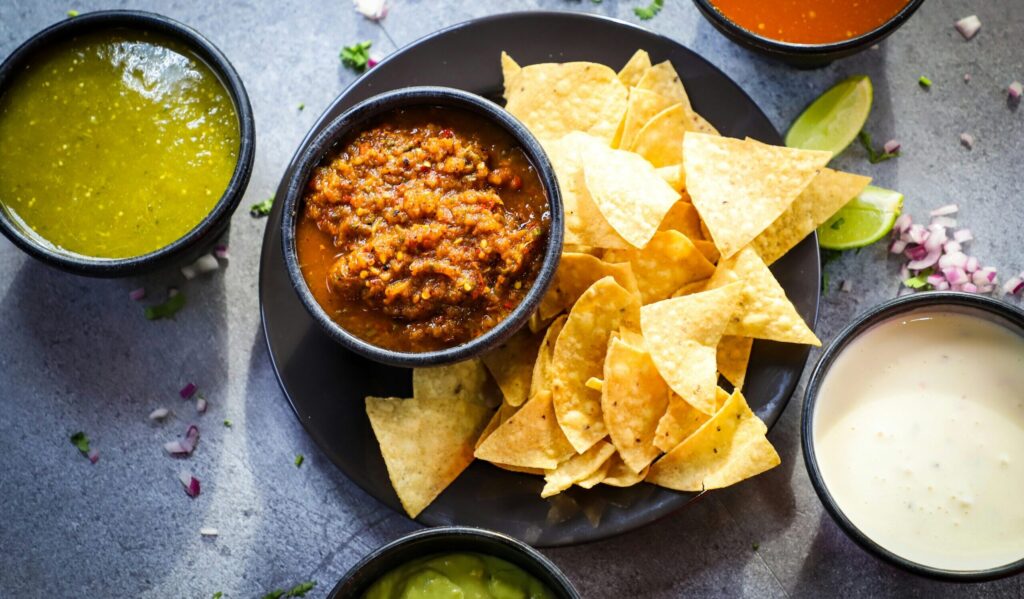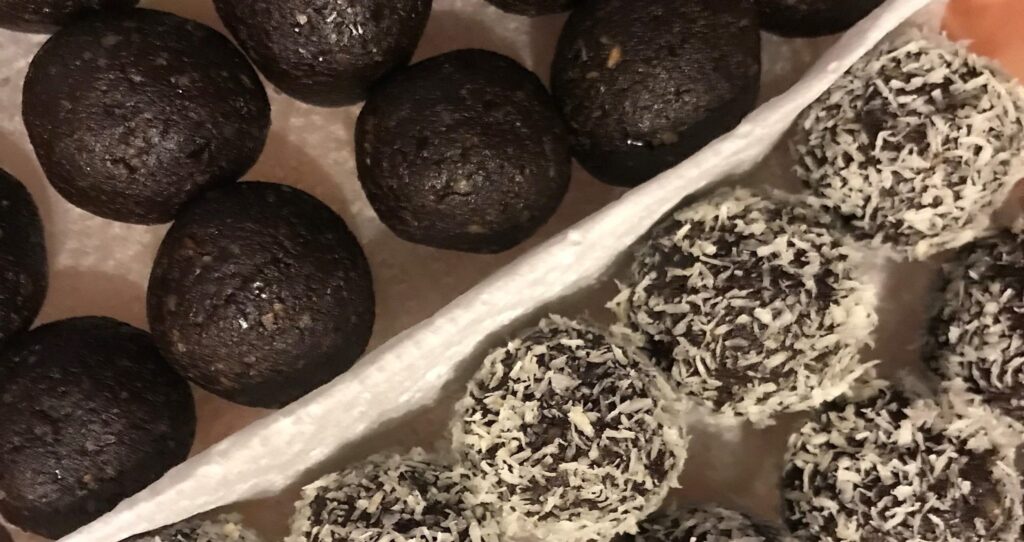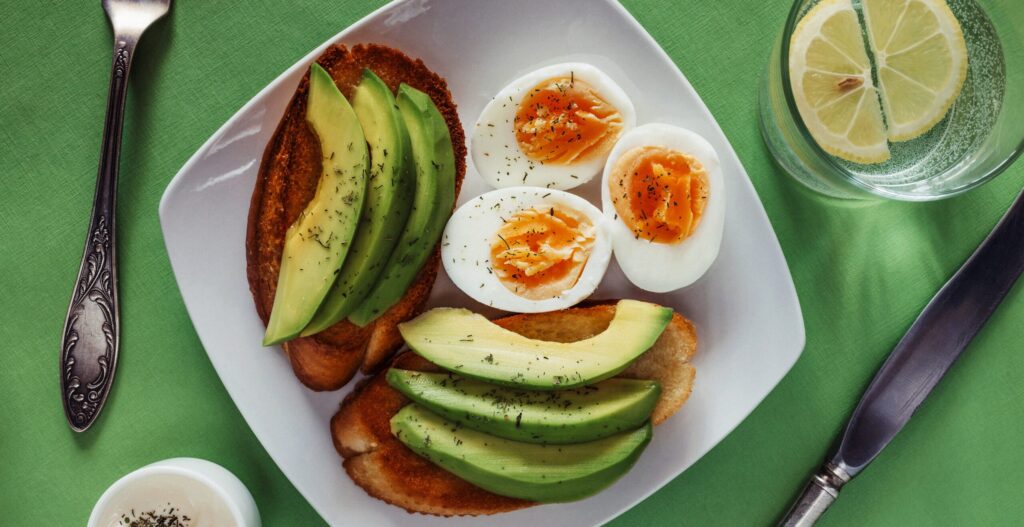![]() As we find ourselves eyeballs-deep in the fall season, full of football watch parties, chili cookoffs, and seasonal soups and dips at every turn, it can be difficult to avoid the ever-alluring draw of the accompanying crunchy chip. I have a minor confession. I find the snack chip aisle at the grocery store equal parts intriguing, overwhelming, and of course tempting. Admittedly, this is not a regular stop on my typical grocery store trip. But on the rare occasion when I do venture down that carb-filled alley of shiny bags all claiming something amazing, I’m struck by the ever-growing number of options. Especially in the health food stores where apparently the sky’s the limit on what you can make a chip out of! Do you even know what a casava root is?
As we find ourselves eyeballs-deep in the fall season, full of football watch parties, chili cookoffs, and seasonal soups and dips at every turn, it can be difficult to avoid the ever-alluring draw of the accompanying crunchy chip. I have a minor confession. I find the snack chip aisle at the grocery store equal parts intriguing, overwhelming, and of course tempting. Admittedly, this is not a regular stop on my typical grocery store trip. But on the rare occasion when I do venture down that carb-filled alley of shiny bags all claiming something amazing, I’m struck by the ever-growing number of options. Especially in the health food stores where apparently the sky’s the limit on what you can make a chip out of! Do you even know what a casava root is?
You certainly do not lack for choices. Are you feeling gluten free? Corn free? Grain free? Do you want more salt or less? Care for a splash of lime? Colorful potatoes that put rainbows to shame? Roots a plenty, perhaps? Beans for a protein punch? Cauliflower, anyone? Whew. You could work up an appetite (or maybe a headache) just considering your options.
So, which bag do you choose? Well, as with all things nutrition…that depends. It depends on a lot of things actually. But for purposes of this attempt to sort through the conundrum a bit, let’s put aside important factors such as cost, flavor, texture, and even how it will hold up to your dip of choice. What the heck else is there?! Well, a major factor for me is always nutrition – the ingredients and how they’ll affect my body both in the short term and for the long haul.
There’s a lot to consider from the nutrition perspective. And of course, there’s no right answer for everyone (I’m sorry!). But there’s a lot we can do to help narrow down the best choices for you. Assuming you don’t have any health conditions or diagnoses that require you to limit or avoid certain ingredients or foods, there are still some helpful pros and cons you can consider to help you decide.
First let’s take on gluten. I mean that’s an easy target, right? I’m pretty sure nobody has been told they really should be eating more gluten. And there are many reasons we could all use a little (or a lot) less gluten in our lives. Gluten is present in varying amounts in almost all processed foods (unless labeled to the contrary), so it’s very hard to avoid gluten if most of your food comes from a package, a restaurant, or a drive-through. So what could be so bad about gluten if it’s so popular? Remember that mean girl in middle school? Just because she was popular doesn’t mean she didn’t have the power to make your life miserable. Gluten is like the mean girl. She can make you feel fat (bloated), irritated (inflamed), or generally uncomfortable (gassy or constipated). Yuck. Out with the gluten mean girls. (And have I cured your snack cravings for the moment?)
Ok, so good old fashioned corn chips brag that they’re gluten-free, so what’s wrong with corn? Oh corn, you strut into the room with your vegetable crown hoping everyone will just choose you and feel good about it. Not so fast. Yes, in your natural on-the-cob form, you do possess some healthy vitamins and minerals, but that’s not enough to induct your chip form into the Vegetable Hall of Fame. Corn’s starchy nature causes it to spike our blood sugar levels, and its beneficial fiber and other nutrients are mostly lost during the process is takes to become a chip. In addition, today’s corn crops are a far cry from their more pure and digestible ancestors and are largely genetically modified as well. Then there’s that digestion issue. You know how when you eat whole kernels of corn they tend to come out, well…still whole? That’s a problem. If food isn’t being digested fully by our bodies, many of its potential benefits just pass on by with a good flush.
Speaking of digestion (and inflammation), that leads us to grains. Haven’t we been told for decades now that whole grains are super good for us? Um…have you seen the number of grain-free chip options popping up on the shelves? That’s no coincidence. I hate to break it to ya, but grains have their problems too. A grain grows inside its own little protective suit of armor to keep it safe and enable it to produce more baby grains. And their shields do as much to keep stuff in as they do to keep stuff out. What this means for the eaters of the grains is that they basically pass on through your entire digestive system with their shields intact enough to prevent adequate release of what they hold inside – those healthy vitamins and minerals.
And here’s where we reference all those grain-free options again. Here’s where you may find your happy medium on nutrition vs. taste and texture. Just beware of the many fillers and yucky stuff that often gets added to make the taste, texture, or even shelf-life more appealing. It always comes back to the fine print on the food label. The ingredients list should be your first stop when deciding between options from a nutrition perspective. The shorter the list, the better. And if you see words you don’t know, do a quick Google search to learn more. Once you do this several times, you’ll start to get the hang of it and the process will go faster. Before you know it, you’ll be that person advising your fellow shopper toward or away from the options they’re pondering (oh, is that just me?).
The bottom line in solving your chip conundrum comes down to label reading, understanding the ingredients, and ultimately experimenting with how they taste, complement your snack time spread, and affect your own body. Chips are a snack food meant to be enjoyed in moderation, and you deserve to enjoy them while not sacrificing your own health in the process.![]()




